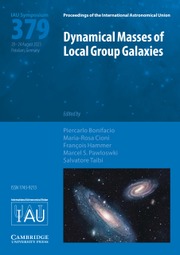No CrossRef data available.
Article contents
The evolutionary path from the AGB to the PN phases: certainties and open issues
Published online by Cambridge University Press: 06 October 2025
Abstract
The modelling of the evolutionary phases beyond the asymptotic giant branch attracts the interest of the astrophysical community because it allows the determination of the properties of progenitor stars and to deduce the efficiency of the mechanisms able to alter the surface chemistry of the stars evolving through the asymptotic giant branch. This has been possible since improvements in the modelling of these phases, which allow a reliable determination of the luminosity with which stars evolve after the termination the asymptotic giant branch evolution.
The surface chemistry of post-asymptotic giant branch stars and planetary nebulae is shown to be tightly correlated to the various processes taking place during the asymptotic giant branch evolution. The possibility of using the observed infrared excess of these evolved stars to derive information on the dust formation process during the previous evolutionary phases is also discussed.
Information
- Type
- Contributed Paper
- Information
- Proceedings of the International Astronomical Union , Volume 19 , Symposium S384: Planetary Nebulae: A Universal Toolbox in the Era of Precision Astrophysics , December 2023 , pp. 276 - 289
- Creative Commons
- This is an Open Access article, distributed under the terms of the Creative Commons Attribution licence (http://creativecommons.org/licenses/by/4.0/), which permits unrestricted re-use, distribution and reproduction, provided the original article is properly cited.
- Copyright
- © The Author(s), 2025. Published by Cambridge University Press on behalf of International Astronomical Union


